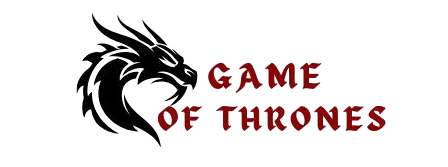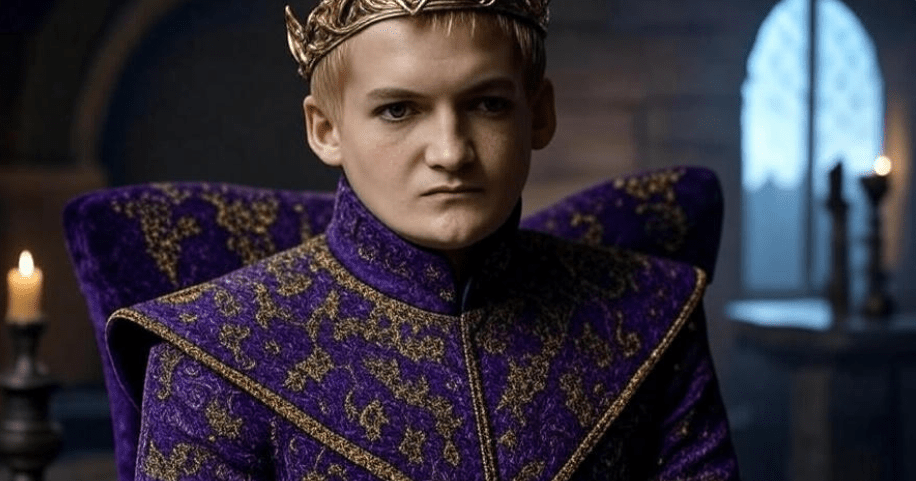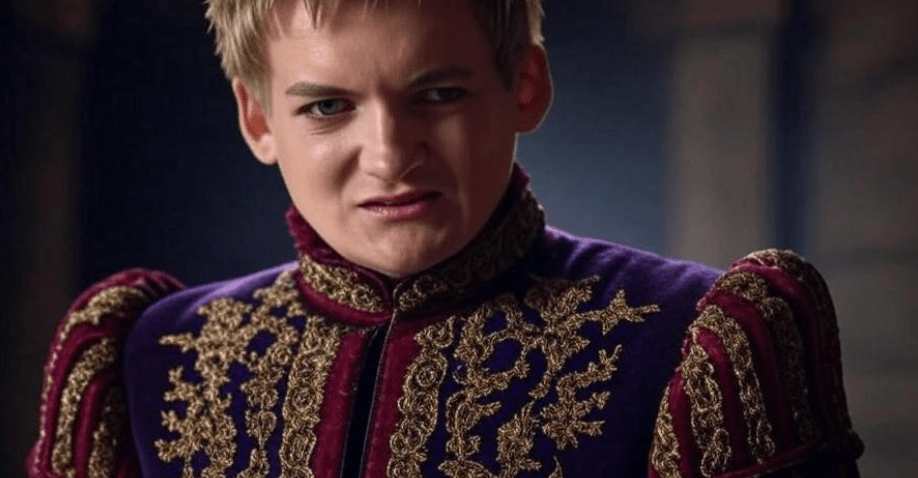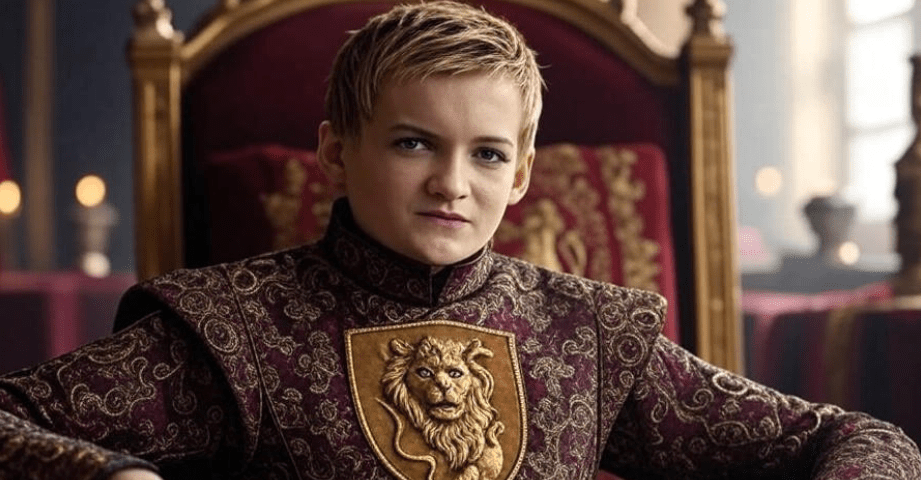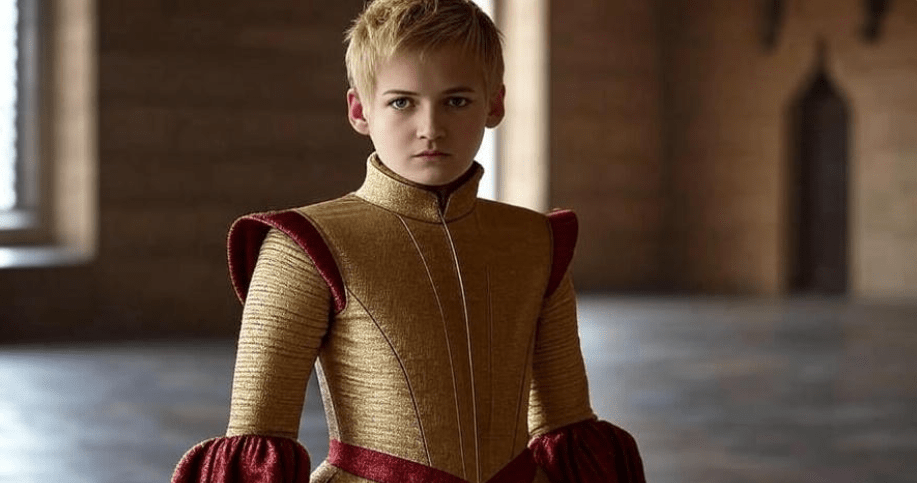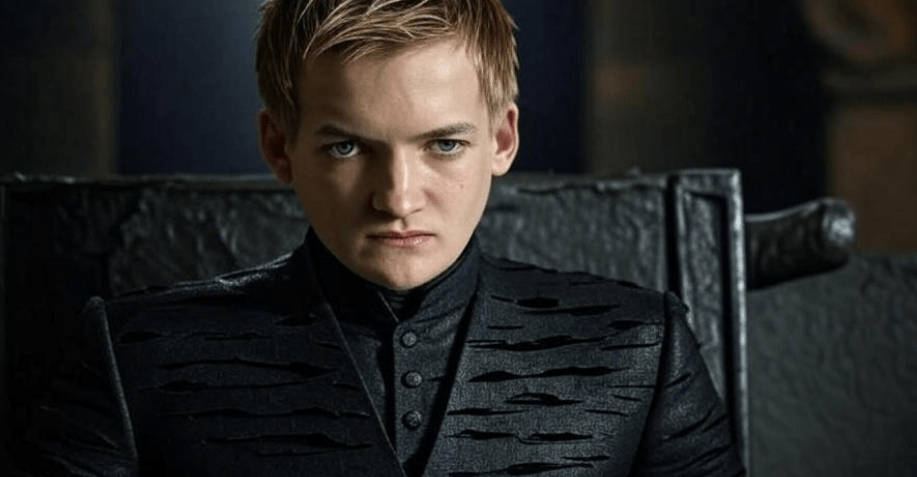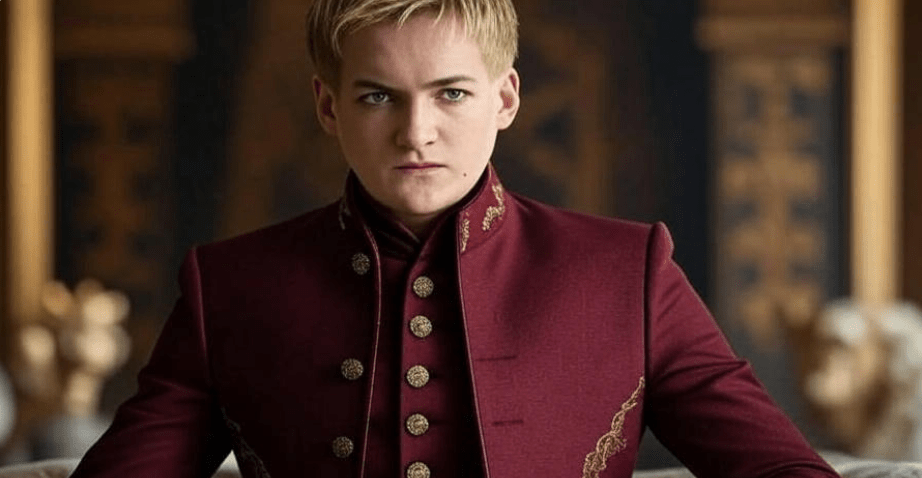
The Symbolism Behind Joffrey Baratheon’s Outfits: What His Wardrobe Reveals About His Character
What if I told you that Joffrey Baratheon’s wardrobe in Game of Thrones says more about his personality than his actions ever could? 
Table of Contents
Toggle1. Understanding Joffrey Baratheon: A Glimpse Into His Character
Joffrey Baratheon is one of the most infamous characters in Game of Thrones, and his wardrobe is a direct reflection of his complex personality. At first glance, Joffrey may seem like a typical spoiled prince, but his clothing tells a deeper story. It’s not just about looking good—his outfits are an extension of his desire for power, control, and validation.
Power Through Appearance 
Joffrey’s need to project power is at the core of his character. He’s young, inexperienced, and constantly trying to prove himself worthy of the throne. His clothing often communicates authority and dominance, even when his actions fail to back it up. The opulent fabrics, the intricate details—every part of his wardrobe is designed to show the world that he’s in charge. But here’s the catch: he overcompensates, which makes his outfits feel forced and unnatural. His wardrobe doesn’t just hint at his insecurity—it screams it.
Insecurity Behind the Crown 
Beneath Joffrey’s royal attire, there’s a deeply insecure young man struggling to hold onto power. His clothing choices are carefully curated to project confidence, but his lack of experience and emotional maturity often reveal his true self. Unlike other characters, like Tyrion Lannister, who dress in ways that reflect intelligence or humility, Joffrey uses his clothes as a shield. The more he wears, the more he tries to convince others—and himself—that he belongs in the seat of power.
A Desire for Validation 
Joffrey’s wardrobe is also about seeking approval, particularly from his mother, Cersei, and the people around him. His outfits are often lavish and extravagant, designed to garner attention and admiration. But the deeper symbolism here is that no amount of gold or silk can validate Joffrey. His clothes reflect a man desperate to be seen as powerful, but they also reveal how disconnected he is from the true nature of leadership.
Takeaway: What This Means for You
In real life, Joffrey’s obsession with clothes as a symbol of power serves as a cautionary tale. Sometimes, the clothes we wear can be used to project a sense of control, confidence, or status. But it’s important to remember that true power isn’t about what you wear—it’s about who you are. Joffrey’s wardrobe serves as a reminder that over-reliance on appearance to gain respect can lead to self-doubt and instability.
By understanding the symbolism behind Joffrey Baratheon’s outfits, we get a clearer picture of his character—and how his clothing fails to mask his inner struggles. It’s a great lesson in how authenticity matters more than appearance when it comes to building true power.
2. The Colors of Joffrey’s Wardrobe: What Do They Symbolize?
Colors in fashion aren’t just about aesthetics—they convey messages, express moods, and reveal hidden truths about a person. In Joffrey Baratheon’s case, his wardrobe colors are carefully chosen to communicate power, wealth, and aggression. Let’s break down the most prominent colors in his wardrobe and what they reveal about his character.
Gold and Purple: Royalty and Arrogance 

Joffrey’s frequent use of gold and purple is a direct nod to the royal Lannister family. Purple, often associated with kings and queens, is a symbol of authority and luxury. It tells the world, “I belong at the top.” Gold, on the other hand, signifies wealth and status. When Joffrey wears these colors, it’s more than a fashion choice—it’s a power move. But there’s an undercurrent of arrogance here. His over-the-top use of these royal hues highlights his desire to remind everyone of his birthright, even when he doesn’t yet have the wisdom or respect to back it up.
Red: Anger, Aggression, and Violence 
Red is a color that immediately grabs attention. For Joffrey, it symbolizes his volatile temper and hunger for power. It’s the color of blood, conflict, and aggression. Whenever Joffrey wears red, it’s a visual cue that he’s about to cause trouble—whether it’s verbally or physically. His fits of rage are reflected in the intense, fiery nature of this color. But it also shows how he uses anger as a weapon, wearing red to intimidate and dominate.
Dark Tones: A Sign of Cruelty and Control 
While gold and purple are flashy and proud, Joffrey’s wardrobe sometimes takes a darker turn. He’s seen wearing deep blacks and browns, particularly in moments where he’s trying to project an air of authority—or when he’s becoming more ruthless in his approach. These dark tones symbolize control, power, and the grim nature of his rule. They’re not just a statement of strength; they’re also a reflection of his cruel and oppressive reign.
What This Means for You
Color in your wardrobe can communicate a lot about how you want to be perceived. If you want to project power, go for deep, rich colors like purple or dark blues. Red can add an element of assertiveness, but be careful—it’s a strong color that can come across as aggressive if overdone. For a more controlled, sophisticated look, dark tones like black or charcoal can convey strength without being overwhelming.
Joffrey’s wardrobe is a reminder that what we wear is more than just fabric—it’s a statement of who we are, or at least who we want others to think we are. So, next time you’re putting together an outfit, think about the colors that best express the side of your personality you want to highlight.
3. The Royal Seal: Embroidered Symbols and Family Crest
Joffrey Baratheon’s wardrobe is filled with symbolism, and one of the most obvious markers of his power is the repeated use of the Lannister family crest—the lion. These embroidered symbols and family crests are not just decorative elements; they serve as powerful visual statements. Let’s explore what these symbols mean and how they play into Joffrey’s identity as a ruler.
The Lannister Lion: A Symbol of Wealth and Pride 

The Lannister lion is more than just a family crest—it’s a brand. Joffrey, despite being the product of an illicit affair, embraces this symbol as his own, using it to assert his dominance. The lion represents power, pride, and, of course, wealth—the Lannisters are famously rich, and Joffrey’s constant display of their crest is a way of reminding everyone of his family’s influence.
However, there’s also a darker side to the lion’s symbolism. While it’s meant to evoke strength and leadership, it also underscores Joffrey’s arrogance. He wears the lion like a badge of superiority, using it to claim authority, even though his leadership often lacks wisdom and grace.
Family Emblems as Tools of Legitimacy 
Joffrey’s frequent use of the Lannister lion isn’t just about wealth or pride—it’s also about establishing legitimacy. As a ruler, Joffrey is always trying to prove that he has a right to the throne. The lion, stitched into his clothing, acts as a constant reminder to both his enemies and his allies of his royal lineage. It’s not just about family pride; it’s a subtle tool of self-validation.
By wearing the lion’s emblem, Joffrey signals that he belongs in power, that he is a rightful heir to the throne, even though many doubt his true legitimacy. This is a visual strategy to convince others (and perhaps himself) that he is deserving of the throne.
What This Means for You
The use of symbols, whether in clothing or branding, can play a huge role in how we’re perceived. Think about logos, emblems, or even the specific designs on clothing that reflect our identity. Just like Joffrey, you can use symbols in your wardrobe to reinforce your position or express your personal values. However, be careful not to rely too heavily on symbols to validate yourself or your authority. Authenticity, rather than mere display, should be the foundation of any true leadership.
Joffrey’s use of the Lannister lion reminds us that clothing and symbols aren’t just about looking the part—they’re tools to communicate deeper ideas about identity, authority, and self-perception.
4. The Cut and Style of Joffrey’s Outfits: What His Tailoring Reveals
Joffrey Baratheon’s outfits aren’t just about color or symbols—they’re also about how the clothing fits and the overall style. The cut, tailoring, and structure of his wardrobe play a significant role in revealing his personality and his desires. Let’s break down how the fit and style of Joffrey’s outfits speak volumes about his character.
Tight and Fitted: Control and Insecurity 

One noticeable feature of Joffrey’s wardrobe is how tight and fitted his clothing often is. His outfits are structured and meticulously tailored, highlighting his desire for control. The tightness of the garments mirrors his need to control not only his appearance but also the people around him. His clothing often feels stiff, reflecting how rigid and inflexible his rule is.
But there’s more to it than just power. Joffrey’s choice of fitted clothes also speaks to his underlying insecurity. He’s not comfortable in his own skin, and his clothes are a way to “hold himself together,” both literally and figuratively. The tight fit is almost like a physical representation of how tightly wound Joffrey is in his efforts to control his environment and how others perceive him.
Exaggerated Silhouettes: A Desire to Stand Out 
Joffrey’s outfits are often characterized by exaggerated, bold silhouettes—large collars, prominent shoulders, and dramatic layers. These details are meant to make him stand out, to physically elevate his status. The exaggerated nature of his outfits indicates his desire to be seen as above everyone else, not just through his actions but visually. He wants to look like a king, even if his behavior doesn’t always match the regal image he’s trying to project.
This sense of exaggerated style is a common trait in people who are insecure about their place in the world. They overcompensate by amplifying their appearance, trying to appear more imposing or impressive than they actually feel.
Comparison to Other Characters: Power and Insecurity in Contrast 
When compared to characters like Tyrion Lannister or Ned Stark, Joffrey’s style feels more forced. Tyrion, though he is also from a noble family, wears more subtle, refined clothing that speaks to his intelligence and wit. Ned Stark’s simpler, practical attire reflects his honor and down-to-earth nature.
Joffrey, in contrast, uses his clothes to project an image of power and strength, but they often appear unnatural and uncomfortable, highlighting his lack of true leadership qualities. His over-the-top tailoring reveals how much he depends on appearance to bolster his fragile sense of authority.
What This Means for You
Joffrey’s wardrobe is a reminder that the way we dress can reveal a lot about how we want to be perceived—and how we feel on the inside. If you’re looking to project authority, consider well-tailored clothes, but avoid going too overboard with tight fits or exaggerated designs. The goal is to strike a balance between confidence and comfort, ensuring that your clothes reflect your true self rather than masking insecurities.
Joffrey’s style teaches us that while clothing can be a tool for control, authenticity and comfort are what ultimately create lasting power and influence. Overcompensating with overly structured outfits might give a temporary illusion of authority, but true confidence comes from feeling at ease in your own skin.
5. The Role of Joffrey’s Wardrobe in His Downfall
Joffrey Baratheon’s downfall wasn’t just about his cruelty or mismanagement of power—it was also written in the clothes he wore. His wardrobe choices, once signs of confidence and royalty, eventually became symbols of his unraveling. Let’s take a closer look at how his clothing played a part in his tragic fall from power.
The Over-Emphasis on Appearances 

At the height of his power, Joffrey used his wardrobe as a tool to project control, dominance, and authority. However, the more he relied on his clothes to assert himself, the more it exposed his weaknesses. His obsession with looking like a king—rather than actually being one—became his undoing. His wardrobe wasn’t a reflection of true leadership; it was a mask that hid his insecurities and lack of emotional maturity.
As Joffrey’s reign progressed, his clothing became more extravagant and ostentatious. Instead of focusing on the substance of his rule, he relied on outward symbols to maintain his image. This reliance on appearance—rather than genuine leadership—made him appear increasingly detached from reality.
Fashion as a Reflection of His Cruelty 
As Joffrey’s cruelty intensified, so did the severity of his clothing choices. Darker colors, heavier fabrics, and more severe cuts marked his transition from a boy trying to assert his power to a tyrant who ruled with fear. His wardrobe mirrored his growing cruelty, creating a visual representation of his harsh and oppressive rule. The more violent and unpredictable he became, the more his clothes began to reflect that darkness.
Interestingly, the more he dressed like a king, the more he distanced himself from the qualities that would have truly earned him the throne—wisdom, justice, and empathy. His clothes, which were once meant to inspire respect, instead became symbols of his dictatorship.
A False Sense of Control 

Joffrey’s clothes, designed to be rigid and controlled, eventually became a metaphor for his inability to adapt. His tightly fitted clothes were symbolic of a man whose need for control was suffocating him. While his appearance was designed to convey authority, his inability to connect with those around him, coupled with his erratic behavior, led to his downfall. The more he tried to control everything around him, the less power he actually had.
By the time his reign ended, his wardrobe no longer projected the image of a ruler—it was the sign of someone out of touch, trapped in a fantasy of control, and unable to face reality.
What This Means for You
Joffrey’s wardrobe downfall offers a critical lesson: over-reliance on external appearances can be a dangerous path. While clothing can certainly influence how others see you, it’s important not to let your image be a substitute for substance. Leadership, like confidence, comes from within. Focusing on authentic growth, relationships, and self-awareness will ensure that you don’t fall into the trap of relying too much on the surface.
Joffrey’s clothing choices remind us that while the right wardrobe can help you present yourself well, it’s the inner qualities—your character, wisdom, and actions—that truly define your power.
6. The Symbolism Behind Joffrey’s Outfits and Its Real-Life Application
Joffrey Baratheon’s wardrobe isn’t just a tool for storytelling—it also offers valuable insights for real-life fashion choices. The symbolism behind his outfits reveals important lessons on how clothing can communicate power, insecurity, and authority. Whether you’re dressing for a job interview, a big presentation, or even just navigating social dynamics, understanding the power of clothing can help you project the right image.
Clothing as a Tool for Projecting Power 

Joffrey uses his clothes as an armor—his outfits are designed to broadcast power, wealth, and authority. In real life, clothing can have a similar impact. A well-tailored suit or a strategically chosen color can help you convey confidence and authority. But unlike Joffrey, it’s important not to rely solely on your appearance. Clothing can help you project the image of power, but true leadership and influence come from the qualities you embody, not just the clothes you wear.
If you’re aiming to project power or competence, focus on clothing that aligns with your role or position. A sharp, well-fitted blazer or a classic, professional color palette (like navy, black, or gray) can help you appear confident and capable. But remember, don’t let your wardrobe be a mask for insecurity. Authenticity will always trump appearance when it comes to building genuine authority.
The Dangers of Overcompensating Through Appearance 

One of the most glaring issues with Joffrey’s wardrobe is his overcompensation. His clothes often feel forced, as if he’s trying to convince everyone (and himself) that he’s fit to rule. In real life, this is a common trap people fall into when trying to project a persona they haven’t fully embraced. Over-the-top clothing or excessive branding can make you seem inauthentic and, ultimately, undermine your credibility.
Instead of trying to look like someone you’re not, focus on dressing in a way that feels true to who you are. For example, if you’re in a leadership position, aim for clothes that exude confidence without feeling like a costume. The goal is to blend style with substance. When you’re comfortable in your outfit, it’ll reflect your inner confidence—and others will see that.
Finding Balance: Power, Comfort, and Authenticity 
Joffrey’s obsession with his appearance prevents him from being truly effective. His wardrobe becomes a crutch, rather than a source of empowerment. In real life, finding balance is key. Clothes should enhance your confidence, but they shouldn’t be the only source of your self-assurance. Aim for a wardrobe that allows you to feel comfortable, authentic, and powerful all at once.
To strike this balance, pay attention to fit, fabric, and how your clothes make you feel. Tailored clothes give a polished appearance, but comfort and authenticity should never be sacrificed. Dressing in a way that feels true to you is far more impactful than wearing something solely to project a certain image.
What This Means for You
Joffrey’s wardrobe is a powerful reminder that while clothes can help you project an image, they shouldn’t define who you are. To apply these lessons in your own life, focus on clothing choices that reflect your personal values and confidence. Whether you’re aiming to assert power, command respect, or just feel more comfortable, your wardrobe can be a tool—but it’s your actions, mindset, and authenticity that will truly shape the impression you leave on others.
In the end, Joffrey’s wardrobe symbolizes more than just royal power—it’s a cautionary tale about the dangers of relying too heavily on appearances. Let his fashion mistakes be a guide as you choose clothes that serve to enhance, not mask, the real you.
Joffrey Baratheon’s Wardrobe as a Reflection of His Inner World
Joffrey Baratheon’s wardrobe tells a compelling story about his character—one of insecurity, power, and eventual downfall. From the colors he wears to the symbols embroidered into his clothing, every detail reflects his desperate need to project authority, control, and legitimacy. But as we’ve seen, his clothing choices are also a reminder that appearances can be deceiving. While Joffrey tries to use fashion as a tool to assert his dominance, it only highlights his internal struggles and his inability to truly embody the leadership he craves.
In real life, the symbolism behind Joffrey’s outfits offers valuable lessons. Clothing can be a powerful tool to communicate who we are and what we stand for, but it’s essential not to rely on appearance alone. True influence comes from authenticity, substance, and self-assurance—qualities that no outfit can replace.
So, whether you’re dressing for a professional setting, a social event, or even your daily life, remember that your clothes should enhance, not mask, who you truly are. Take inspiration from Joffrey’s wardrobe, but avoid his mistakes: wear what empowers you, not what forces an image. After all, your true power lies not in what you wear, but in how you carry yourself.
Frequently Asked Questions (FAQs)
1. What does Joffrey Baratheon’s wardrobe symbolize?
Joffrey’s wardrobe symbolizes his desire for power, control, and legitimacy. His use of royal colors like purple and gold, as well as his family crest, the Lannister lion, reflects his need to assert his authority, despite his underlying insecurities and lack of true leadership qualities.
2. Why does Joffrey wear so many extravagant outfits?
Joffrey’s extravagant outfits are meant to project power and wealth, compensating for his lack of experience and confidence as a ruler. He uses clothing as a tool to establish dominance and gain validation, though his choices often come across as forced and inauthentic.
3. How do Joffrey’s clothes reflect his personality?
Joffrey’s clothes reflect his arrogance, insecurity, and desire to control others. His tight-fitting, structured outfits suggest a need for dominance, while the bold colors and heavy fabrics show his attempt to assert power, often masking his deep inner insecurity.
4. What is the significance of the Lannister lion on Joffrey’s outfits?
The Lannister lion symbolizes wealth, pride, and authority. By wearing the lion on his clothing, Joffrey not only connects himself to the powerful Lannister family but also tries to validate his claim to the throne, even though his actions and behavior often undermine his royal status.
5. Does Joffrey’s wardrobe change throughout Game of Thrones?
Yes, Joffrey’s wardrobe evolves from more refined, regal outfits to darker, more exaggerated ones as his cruelty intensifies. As his personality becomes more tyrannical, his clothing choices become more severe, visually reflecting his growing instability and harsh rule.
6. What do Joffrey’s clothes say about his need for validation?
Joffrey’s clothes, particularly his excessive use of royal symbols and lavish fabrics, show his deep need for validation. His outfits are designed to make others see him as a powerful ruler, but they also highlight his insecurity and constant need for approval, particularly from his mother and court.
7. How can I use clothing to project confidence, like Joffrey?
While Joffrey overcompensates with extravagant attire, you can use clothing to project confidence by choosing well-tailored, polished outfits that reflect your role and personality. Focus on timeless, classic pieces in colors like navy, black, or gray, which communicate authority without the overstatement.
8. What lesson can we learn from Joffrey’s fashion choices?
Joffrey’s fashion choices teach us that while clothing can help project power, true confidence and leadership come from within. Relying too heavily on appearance can create a false image and lead to a lack of authenticity. It’s essential to balance style with substance and not use clothing as a crutch for self-doubt.
